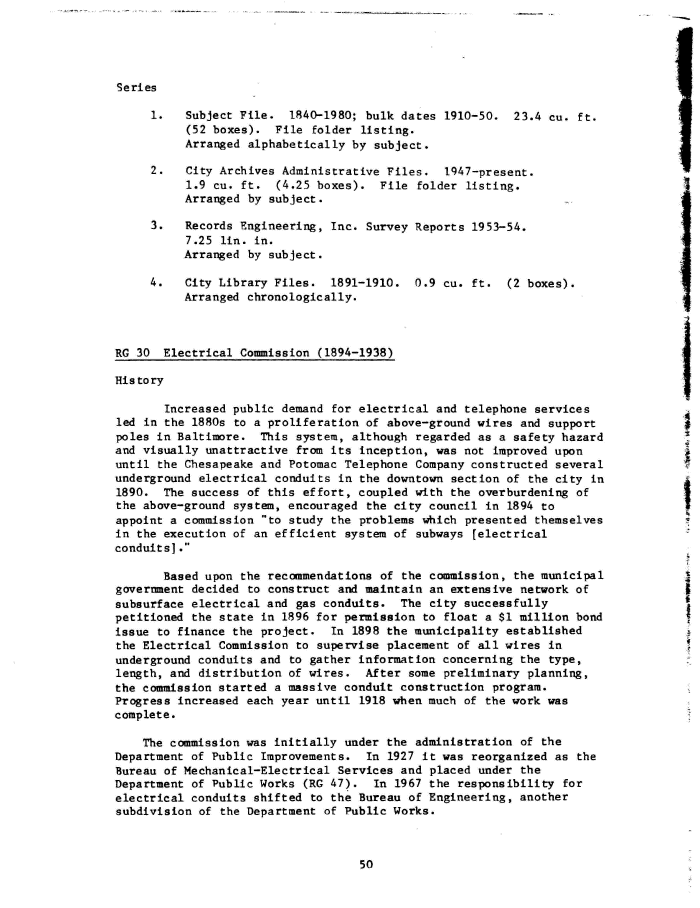|
Series
1. Subject File. 1840-1980; bulk dates 1910-50. 23.4 cu. ft
(52 boxes). File folder listing.
Arranged alphabetically by subject.
2. City Archives Administrative Files. 1947-present.
1.9 cu. ft. (4.25 boxes). File folder listing.
Arranged by subject.
3. Records Engineering, Inc. Survey Reports 1953-54.
7.25 lin. in.
Arranged by subject.
4. City Library Files. 1891-1910. 0.9 cu. ft. (2 boxes).
Arranged chronologically.
RG 30 Electrical Commission (1894-1938)
History
Increased public demand for electrical and telephone services
led in the 1880s to a proliferation of above-ground wires and support f
poles in Baltimore. This system, although regarded as a safety hazard *
and visually unattractive from its inception, was not improved upon |
until the Chesapeake and Potomac Telephone Company constructed several f
underground electrical conduits in the downtown section of the city in 1
1890. The success of this effort, coupled with the overburdening of 1
the above-ground system, encouraged the city council in 1894 to 1
appoint a commission "to study the problems which presented themselves ?
in the execution of an efficient system of subways [electrical
conduits]."
i
Based upon the recommendations of the commission, the municipal |
government decided to construct and maintain an extensive network of f
subsurface electrical and gas conduits. The city successfully |
petitioned the state in 1896 for permission to float a $1 million bond f
issue to finance the project. In 1898 the municipality established j
the Electrical Commission to supervise placement of all wires in f
underground conduits and to gather information concerning the type, ;
length, and distribution of wires. After some preliminary planning,
the commission started a massive conduit construction program.
Progress increased each year until 1918 when much of the work was
complete. 1
The commission was initially under the administration of the
Department of Public Improvements. In 1927 it was reorganized as the
Bureau of Mechanical-Electrical Services and placed under the
Department of Public Works (RG 47). In 1967 the responsibility for
electrical conduits shifted to the Bureau of Engineering, another
subdivision of the Department of Public Works.
50
|

